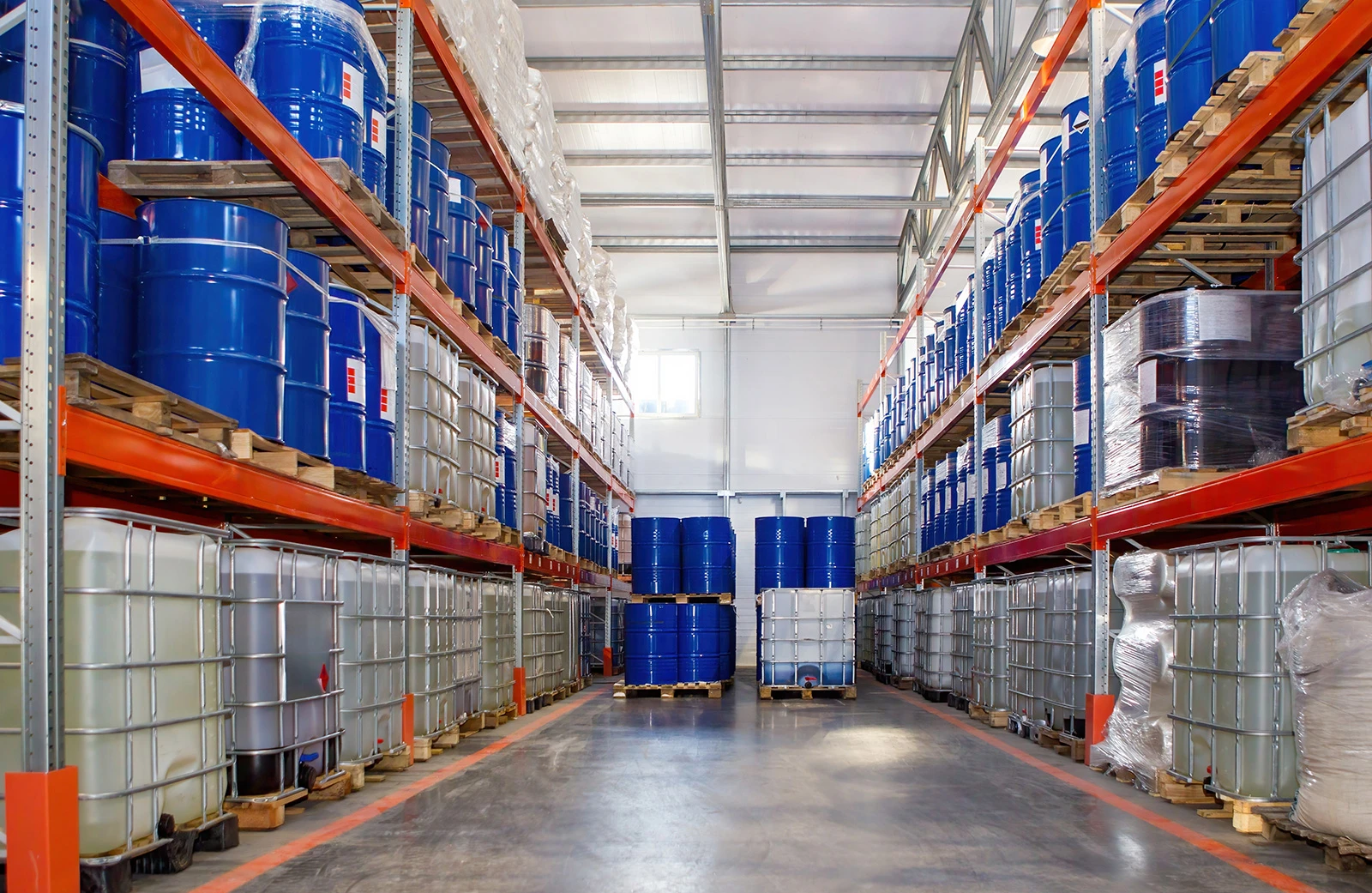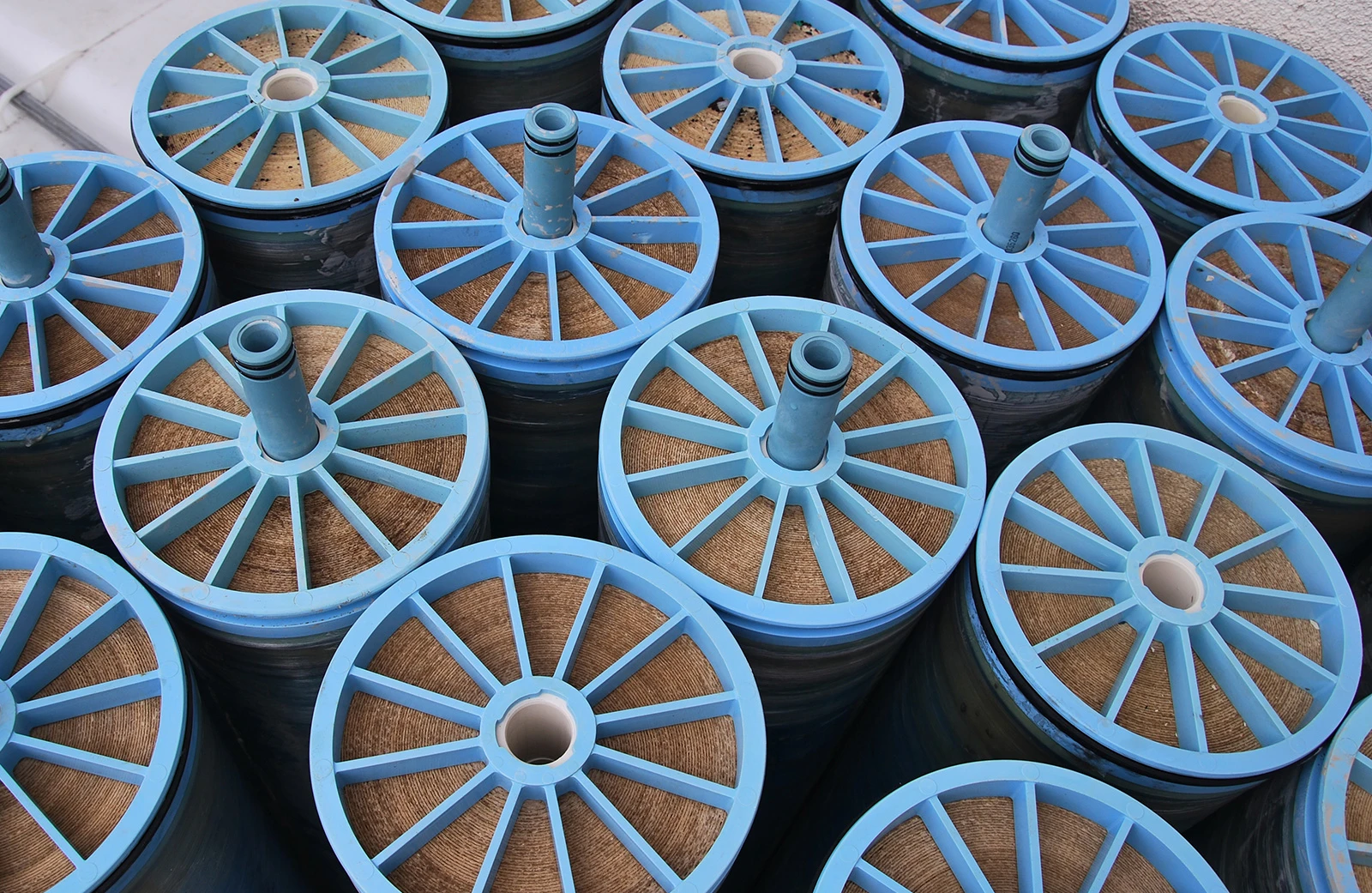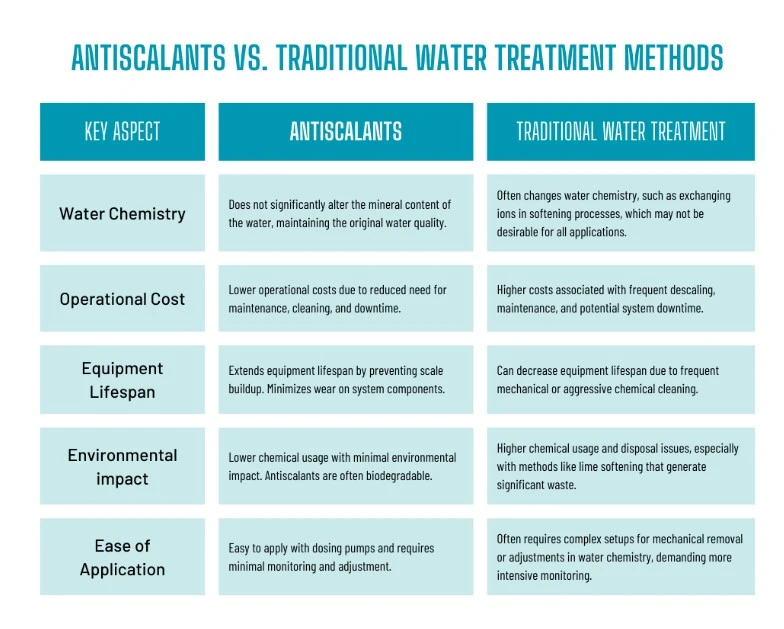The Antiscalant Advantage: Protecting Water Systems from Scaling with Specialty Chemistry

The antiscalant revolution is here!
Antiscalants, typically blends of water-soluble polymers and various chemical agents, inhibit scale deposits in industrial and municipal water treatment systems. They also increase system efficiency, reduce maintenance costs, and improve overall performance.
This article provides an in-depth overview of antiscalants and how they can be used to protect water systems from scale buildup.
Common Causes of Scaling

Scaling occurs when dissolved mineral salts reach their solubility limits and precipitate onto surfaces. The most common type of scaling involves calcium carbonate (CaCO3). However, other salts like calcium sulfate, barium sulfate, and silica also contribute to scale formation.
Scaling is a common problem in water treatment plants, which can be caused by several factors:
Supersaturation of Minerals
In a reverse osmosis system, pressure drives the water through a semipermeable membrane, leaving behind salts and minerals in the concentrate stream. When concentrated, these salts exceed solubility limits and become oversaturated. As a result, they precipitate onto the membrane surfaces, blocking the pores and reducing water flux and system efficiency.
Changes in Water Temperature
Scale solubility can be temperature or pH dependent. Changes in water quality or a feed pH adjustment can change the system pH enough to affect scale saturation in some cases. Scales such as calcium carbonate, calcium phosphate, and silica are especially sensitive to pH.
Seasonal changes in water temperature can lead to changes in scale saturation without affecting the actual water quality. Scales such as calcium sulfate and silica are very sensitive to temperature changes and can easily become uncontrollable without oversight.
pH Fluctuations
Monitoring and managing pH is crucial for effective scale control and system efficiency.
Inadequate Pre-Treatment
Without sufficient pretreatment, potential scale-forming ions in the feedwater passing through the RO membranes can become supersaturated and precipitate onto the membrane surface as scale deposits.
High Recovery Rates
Recovery rate refers to the percentage of feed water converted into permeate water. A higher recovery rate reduces the volume of concentrate stream, decreasing cross-flow velocity, which increases the likelihood of scale formation on the membrane.
If these causes are not well-addressed, scaling can lead to reduced system performance, increased maintenance costs, and shortened membrane lifespan. Fortunately, there are established industry practices that mitigate these risks, including the use of antiscalant chemicals during pre-treatment.
How Do Antiscalants Work?
Antiscalants are highly effective at managing scale formation in water treatment systems by delaying precipitation from occurring within the RO system. The antiscalants do this using two specific mechanisms:
- Dispersion: antiscalants use their electrical charge to keep particles suspended in solution and keep them from sticking to other particles forming larger solids that can stick to the membrane surface.
- Crystal Modification: sparingly soluble salts form highly ordered crystal structures with regular repeating crystal units. The antiscalant molecules will attach to a growing crystal active site and disrupt this structure growth. This makes the crystal grow in a distorted manner which keeps it from growing large and potentially sticking to the membrane surface.
Antiscalants vs. Traditional Water Treatment Methods
Traditional methods such as mechanical descaling and water softening have been used to handle scale. However, using antiscalants represents a more modern approach with several advantages over these traditional methods.

Antiscalants not only outperform traditional methods in general water treatment capabilities but also offer customized solutions that cater to the diverse needs of various industries, such as:
- Food & Beverage: Ensures consistent product quality by maintaining scale-free heat transfer surfaces
- Municipal Water Supply: Antiscalants do not alter the mineral balance of treated water, which is important for maintaining the health standards of potable water
- Healthcare: Keeps medical equipment functioning efficiently, especially hemodialysis membrane systems
To learn more about the various industries Avista serves, visit our Solutions by Industry page.
How to Choose the Right Antiscalant Treatment For RO Systems
There’s no universal antiscalant for every RO membrane system. Some antiscalant solutions can target a broad spectrum of scales, while others target specific types such as calcium carbonate, barium sulfate, or silica.
Selecting an antiscalant is a vital step in feedwater pre-treatment system customization. Consult with technical experts in RO membranes or water treatment specialists to find the best type of antiscalant and correct dose rate for your system.
To make an informed decision, it’s important to understand the factors that influence their effectiveness and the types of antiscalants available.
Key Factors To Consider When Selecting An Antiscalant
- Feed Water Quality
Test your feed water characteristics first to assess the scaling potential. Scaling potential can vary greatly between different types of water sources. The appropriate antiscalant treatment will be determined by water analysis, which will be discussed in more detail in the following sections. - System Conditions
Gather operating data specifically on the pH levels, temperature, and flow rates. Factors like the optimum range for antiscalant performance or how quickly the antiscalant can mix with the water and reach the membrane surface prone to scaling must not be overlooked. - Environmental Considerations
Confirm that the antiscalant meets all applicable environmental regulations, especially if the treated water is discharged into natural waters or used for drinking.
For more details, please refer to our Antiscalant Technical Guide.
Antiscalant Dosing in RO Systems

After carefully studying whether the chosen antiscalant will effectively target the mineral content of the RO feed water, the next step is determining the appropriate dose rates. Both underdosing and overdosing can have detrimental effects on system performance and operational costs:
- Underdosing Risks: Insufficient antiscalant results in incomplete scale inhibition. Scale deposits will still form on the membrane surface, pipes, and heat exchangers, ultimately leading to increased energy consumption, higher operational costs, and potentially costly system downtimes for cleaning and repair.
- Overdosing Risks: Using more antiscalant than needed results in chemical waste. While overdosing with Avista antiscalants will not adversely affect the system, it’s still important to optimize dosage to avoid unnecessary treatment costs with the handling and disposal challenges.
Determining the optimal antiscalant dosing rate requires a scientific and systematic approach. Here’s how water treatment specialists do it:
1. Accurate Water Analysis
Laboratory tests like Avista™ Water Analysis can identify common ions involved in scale formation, such as sulfate, bicarbonate, fluoride, silica, and metals. Other contaminants that can increase scaling potentials other than salts are total dissolved solids (TDS).
Once the ion concentrations have been determined, an antiscalant can be selected using Avista™ Advisor™Ci Online dosing software.
2. Dosing Calculations
Advisor™Ci Online projection software is a sophisticated tool for accurate dosing calculations. It can simultaneously analyze multiple factors such as recoveries, temperatures, and pH levels. From the results of the water analysis, AdvisorCi™ Online can select the most suitable antiscalant type with optimized recovery rates, dose rates, and potential scales or foulants.
To learn more about the features of AdvisorCi™ Online, download the brochure.
3. Regular System Monitoring and Adjustment
Monitor the performance of the dosing system and the condition of the treated water with Avista™ Black Box, a system monitoring and troubleshooting tool that analyzes membrane performance and scale formation without shutting down the system.
It’s an iterative process; test the water quality and calculate dose rates again until you reach optimum plant performance. Adjust the feed water pretreatment system and optimize the antiscalant dosage, especially when scaling issues persist.
4. Using Automated Dosing Systems
Automated dosing systems equipped with sensors and controllers are the most cost-effective method of antiscalant addition. This technology uses real-time dosing adjustments based on changes in water flow and chemistry, ensuring consistent scale prevention while optimizing chemical usage.
5. Routine Review and Calibration
Regularly review and calibrate dosing equipment to ensure accuracy. Pumps, valves, and other dosing components can drift or wear over time, affecting dosing precision.
Lastly, stay in touch with us for guidelines on dosing rates, compatibility with other treatment chemicals, and storage conditions to ensure optimal performance.
Why Choose Avista’s Specialty Chemistries Over Commodity Chemicals?
Avista’s specialty chemistries are formulated to address specific problems within RO systems. In contrast, commodity chemicals typically provide broader, more generalized treatment options that may not cater to specific system challenges.
While specialty chemistries might come at a premium, their targeted action often means more efficient dosing and potentially lower overall usage. This can translate to cost savings in the long run by minimizing waste, reducing the frequency of maintenance, and extending the lifespan of equipment.
Explore How Avista Can Enhance Your Water Treatment Strategy
Interested in learning more about how Avista’s specialty chemistries can optimize your specific water treatment needs? Visit our resource hub for detailed case studies, or contact our technical support to explore our range of antiscalant products and find the perfect solution for your needs.


